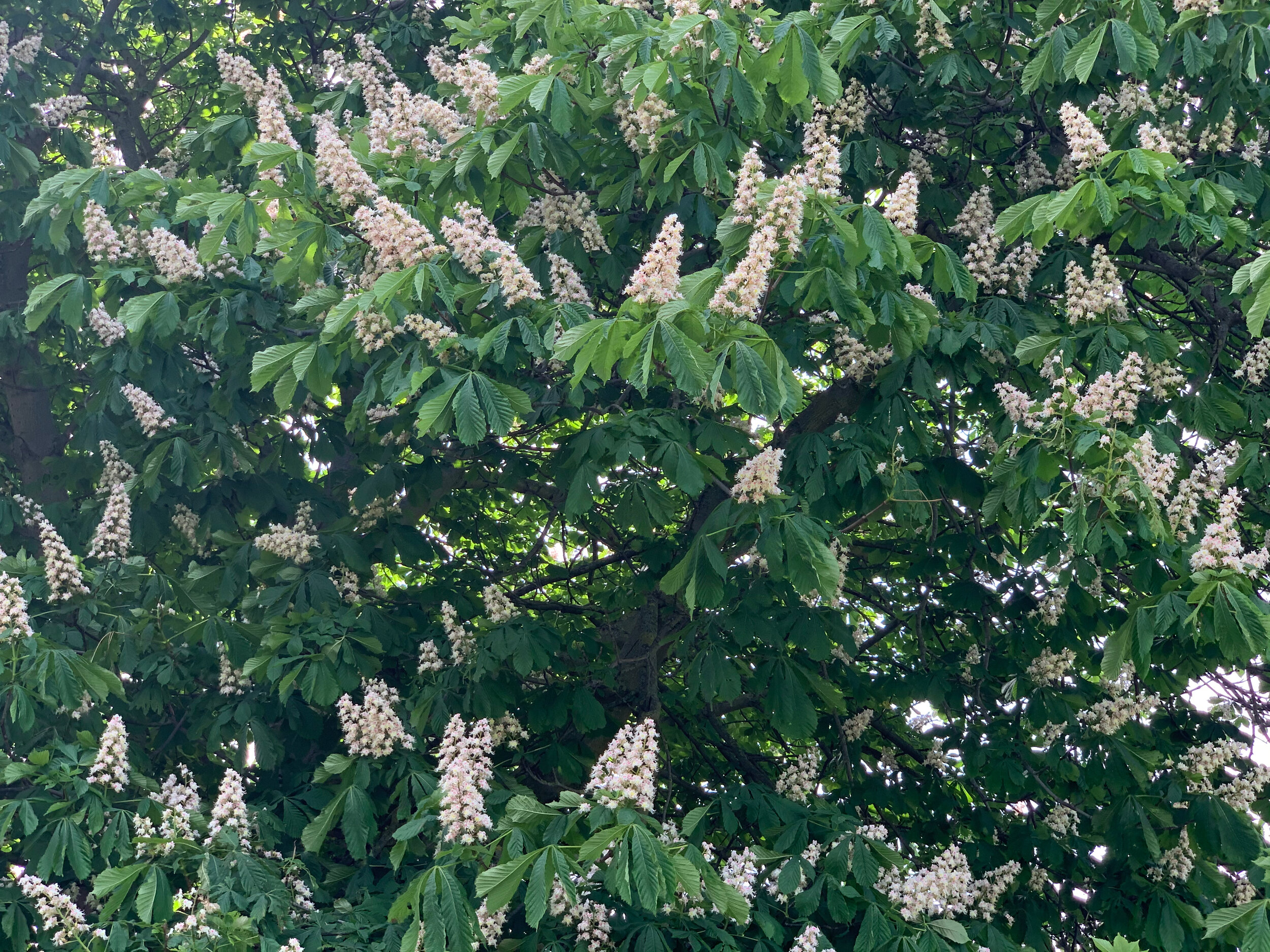
horse chestnut
Aesculus hippocastanum
Historically the LGBTQ+ community has been stigmatised and often referred to as being “unnatural.” However, upon closer examination the natural world is rife with queerness. One set of examples can be found in the variety of plants and their reproductive methods. Nature is in constant flux and is at its best when rich in diversity. Concepts such as science and culture, male and female, human and nature are often contrasted in stark binaries but queerness favours multiplicity and gradients. Moving forward, queer stories from culture and nature should be more broadly interwoven into our understanding of the world.
Horse Chestnut TreeHorse Chestnut Flower
The Horse Chestnut tree has both male/masc and female/femme reproductive organs in their flowers. Since they have both stamens (pollen producing) and carpels (seed producing) they are called “perfect” or “bisexual” flowers. These androgynous plants show us that being queer is natural. Plants have a broad diversity of reproductive methods and sexual expressions, and pollination involves both living and non-living factors such as interactions with animals and the wind. The Horse Chestnut has a sophisticated relationship with bees. The flowers start off white with a flush of yellow to attract the bees; after a flower has been visited by a pollinator, it changes colour from yellow to pink to crimson to signal to future pollinators that they will not find any nectar there and should concentrate their energy on other flowers. Colour communication is an example of mutualism between the pollinators and tree.
ConkersWhile Horse Chestnuts are a common sight throughout European parks and cities, they are actually native to a small area in the Balkans and Greece. They grow up to 40 metres, live up to 300 years, and are easily recognizable by their distinct bell-shaped silhouette and large palmate leaves, which unfurl each spring. Horse Chestnuts are especially well-loved in the UK; if you grew up in the UK, you may know the hard, glossy seeds they produce from the playground game ‘conkers.’
Further Reading:
https://en.wikipedia.org/wiki/Aesculus_hippocastanum
https://www.bbc.co.uk/bitesize/guides/z2xg87h/revision/3
http://www.saps.org.uk/primary/teaching-resources/304-exploring-horse-chestnut-flowers




